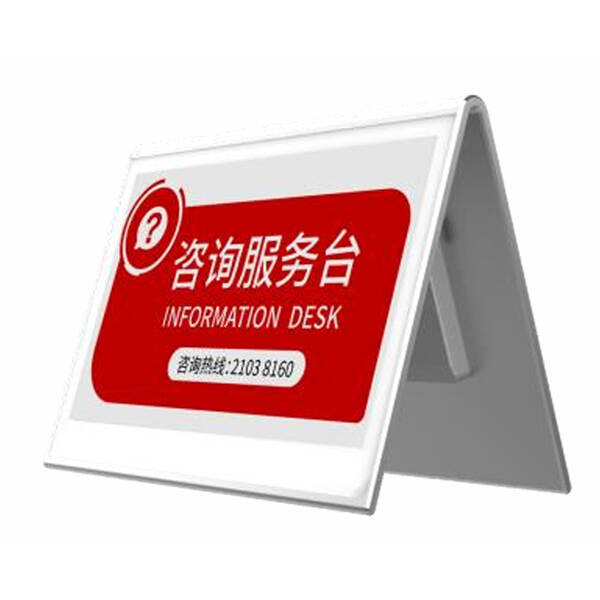In an era where retail agility and operational precision are paramount, the wholesale electronic shelf label system has emerged as a cornerstone technology for modern businesses. This guide dives into every facet of these systems, from their technical architecture to real-world success stories, future innovations, and actionable implementation strategies. Designed for wholesalers, distributors, and multi-location retailers, this resource will equip you to harness the full potential of a wholesale electronic shelf label system while staying ahead of industry trends.
What Is a Wholesale Electronic Shelf Label System?
A wholesale electronic shelf label system (ESL) is a scalable, wireless solution that replaces traditional paper price tags with digital displays. Tailored for large-scale operations, these systems enable centralized control of pricing, promotions, and product data across thousands of SKUs and multiple locations. Unlike standard ESLs, it is engineered for:
- Massive Deployments: Support for 100,000+ labels across warehouses, stores, and distribution centers.
- Multi-Region Compliance: Automatic tax adjustments, currency conversions, and regulatory updates.
- Real-Time Synchronization: Instant updates via cloud-based platforms, IoT networks, or hybrid architectures.
Example: A European electronics wholesaler uses a wholesale electronic shelf label system to manage 85,000 labels across 12 countries, adjusting VAT rates dynamically based on local regulations.
The Evolution of ESL Technology: From Paper to AI-Driven Solutions
Phase 1: Early ESLs (1990s–2010s)
- Basic LCD screens with infrared communication.
- Limited to single-store deployments.
Phase 2: Cloud-Connected Systems (2010s–Present)
- Centralized management via SaaS platforms.
- Integration with ERP and POS systems.
Phase 3: AI-Enhanced Wholesale ESLs (2025 and Beyond)
- Predictive pricing algorithms.
- Self-updating labels powered by edge computing.
Why It Matters: Modern wholesale electronic shelf label systems reduce pricing update times from days to milliseconds, a critical advantage in volatile markets like pharmaceuticals or consumer electronics.
Key Benefits of Adopting a Wholesale Electronic Shelf Label System
Operational Efficiency
- Labor Cost Reduction: A 500-store retail chain saved $4.2M annually by eliminating manual label updates.
- Error Elimination: 99.9% pricing accuracy achieved by integrating ESLs with SAP.
Enhanced Customer Experience
- Dynamic Promotions: Flash sales updated in real-time during peak shopping hours.
- Multilingual Support: Labels displaying product info in 6+ languages for global markets.
Sustainability Gains
- Paper Waste Reduction: One wholesaler cut 18 tons of annual paper waste.
- Energy Efficiency: Solar-powered labels with 10-year lifespans.
Technical Deep Dive: How Wholesale ESL Systems Work
Core Components
- E-Paper Displays: Energy-efficient, sunlight-readable screens (1.2” to 10.1”).
- Gateway Hubs: Bluetooth 5.0, LoRaWAN, or Zigbee communication.
- Cloud Platform: AWS or Azure-hosted dashboards with role-based access.
Data Flow Architecture
- Price change initiated in ERP → 2. Cloud platform validates rules → 3. Update pushed to gateways → 4. Labels refresh in <5 seconds.
Technical Specs:
- Battery Life: 7–15 years (CR2450 lithium batteries).
- Update Frequency: 10,000 labels updated in 8 seconds.
- Security: AES-256 encryption for data transmission.
Industry-Specific Applications
Grocery & Perishables
- Dynamic Expiry Pricing: Automatically discount items 48 hours before expiry.
- Cold Chain Compliance: Waterproof labels for freezer aisles (-30°C operation).
Electronics Wholesale
- Component-Level Tracking: ESLs display real-time stock levels for microchips or connectors.
- B2B Custom Pricing: Show negotiated rates to bulk buyers via QR code scans.
Pharmaceutical Distribution
- Regulatory Compliance: Instant recall alerts for FDA-regulated products.
- Dosage Instructions: Interactive labels showing multilingual usage videos.
Case Studies: Global Success Stories
Case Study 1: Automotive Parts Distributor
- Challenge: Pricing errors caused $1.8M annual losses.
- Solution: Deployed a wholesale electronic shelf label system with AI-driven margin calculators.
- Result: 40% reduction in pricing disputes, 22% faster order fulfillment.
Case Study 2: Global Fashion Retailer
- Challenge: Inconsistent promotions across 300 stores.
- Solution: Centralized ESL system integrated with RFID inventory.
- Result: 90% faster markdowns, 15% increase in clearance sales.
Implementation Roadmap: From Planning to Deployment
Phase 1: Audit & Planning (Weeks 1–4)
Phase 2: Pilot Testing (Weeks 5–8)
- Test 500 labels in high-traffic zones.
- Measure staff adoption rates and update reliability.
Phase 3: Full Deployment (Weeks 9–16)
- Staggered Rollout: Prioritize high-margin departments first.
- Training: VR simulations for warehouse teams.
Overcoming Common Challenges
Challenge 1: High Upfront Costs
- Solution: Leasing models ($0.10 per label/month) or tax incentives for green tech.
Challenge 2: Integration Complexity
- Solution: Pre-built connectors for NetSuite, Oracle, and Microsoft Dynamics.
Challenge 3: Staff Resistance
- Solution: Gamified training with real-time feedback dashboards.
Future Trends: AI, Sustainability, and Beyond
Hyper-Personalization
- Smart Shelf Analytics: ESLs with built-in cameras to track customer demographics and adjust displayed promotions.
Self-Powered Labels
- Energy Harvesting: Labels powered by ambient light or RF signals.
Blockchain Integration
- Transparent Pricing: Immutable records of price changes for audit compliance.
Choosing the Right Vendor: A Buyer’s Checklist
Ask vendors these critical questions:
- Scalability: “Can your system handle 500,000 labels across 50 countries?”
- Disaster Recovery: “What’s your RPO (Recovery Point Objective) for cloud data?”
- Compliance: “Do you support GDPR, CCPA, and industry-specific regulations?”
- Support: “Do you offer 24/7 multilingual technical support?”
Red Flags:
- No references for deployments >10,000 labels.
- Proprietary software that limits third-party integrations.

Conclusion: The Strategic Imperative of Wholesale ESL Systems
Adopting a wholesale electronic shelf label system isn’t just about replacing paper tags—it’s about future-proofing your operations in a world where real-time data and pricing agility define competitive advantage. From AI-driven dynamic pricing to blockchain-enabled transparency, these systems are evolving into the central nervous system of modern retail.
By following the strategies and insights in this guide, you’ll be equipped to select, deploy, and optimize a system that delivers measurable ROI while positioning your business as an innovator in your industry.
Call to Action: Ready to explore how a wholesale electronic shelf label system can transform your business?


